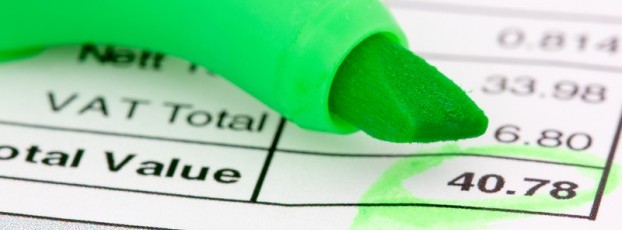
Introduced in 2002, the Flat Rate VAT scheme was implemented to provide smaller businesses with a more straightforward method for calculating their VAT liabilities.
Here, we examine how the scheme works and explain how some companies could pay less tax by switching to the standard VAT scheme, and how the ‘limited cost trader’ rule may cancel out the benefits for small firms.
The basics
Under the standard VAT scheme, you need to calculate how much VAT you have charged on invoices during each quarter, then subtract any VAT you have paid on any services or products you have purchased via the company during the same period. The difference is then payable to HMRC.
Under the Flat Rate VAT scheme, you apply a fixed-rate percentage to your turnover, and pay this amount to HMRC each quarter, rather than working out your precise tax liability in the way described above.
The scheme was designed to make VAT accounting simpler for smaller firms.
Although you continue to charge VAT at the standard 20% rate to your clients/customers, the amount you will repay to HMRC each quarter varies according to the business sector you are in.
For example, many professional service providers, such as accountants, architects, surveyors, and IT contractors/consultants have a percentage of 14.5% (you can read more about the calculation, and what percentages apply to other sectors on the HMRC site here.)
Significantly, during your first year of registration, you’ll receive a 1% discount on the standard percentage, so IT contractors will pay 13.5% during the first 12 months.
Is your business eligible?
If you’re a limited company professional contractor, then your business is almost certainly eligible. Here are the main rules:
- Your estimated VAT taxable turnover (before VAT is applied) over the next 12 months will be £150,000 or less.
- Your business won’t generally be able to reclaim any VAT if you join the scheme, but you may be able to reclaim VAT on large single capital asset purchases worth over £2,000 in one single transaction (e.g. computer equipment).
- Your business can remain in the scheme until turnover is greater than £230,000 per year.
The 16.5% limited cost trader rate
If your business has low annual costs, you may fall into HMRC’s limited cost trader category. This applies if, in a VAT period, your spend on relevant goods is:
- Less than 2% of your VAT-inclusive turnover, or
- More than 2% but less than £1,000 per year (£250 per quarter).
Relevant goods are items you use exclusively for your business – not services.
For example, printer paper and ink, specialist tools, or trade-specific equipment could qualify. Costs that don’t count include accountancy fees, advertising, software, rent, utilities, and food or drink.
Because most contractors buy few qualifying goods, many automatically fall into this category.
If you are classed as a limited cost trader, you must use the 16.5% rate instead of the standard sector rate (14.5% for most service-based contractors).
Unfortunately, this removes almost all of the tax advantage of the Flat Rate Scheme.
| Annual net turnover | VAT-inclusive turnover | FRS at 14.5% | FRS at 16.5% | Extra VAT paid |
|---|---|---|---|---|
| £90,000 | £108,000 | £15,660 | £17,820 | £2,160 |
| £120,000 | £144,000 | £20,880 | £23,760 | £2,880 |
Further information
You can check your status using HMRC’s Flat Rate VAT tool.
Ask your accountant to compare your position under the standard VAT scheme – particularly if you’re not a ‘limited cost trader’, as switching may save you money.
Recommended Contractor Accountants
- SG Accounting - First 3 months £59.50 pm
- Clever Accounts - IR35 FLEX. Take on any contract you are offered
- Aardvark Accounting - Complete service £89 per month
- Integro Accounting - Six months fixed fee accountancy at half price
